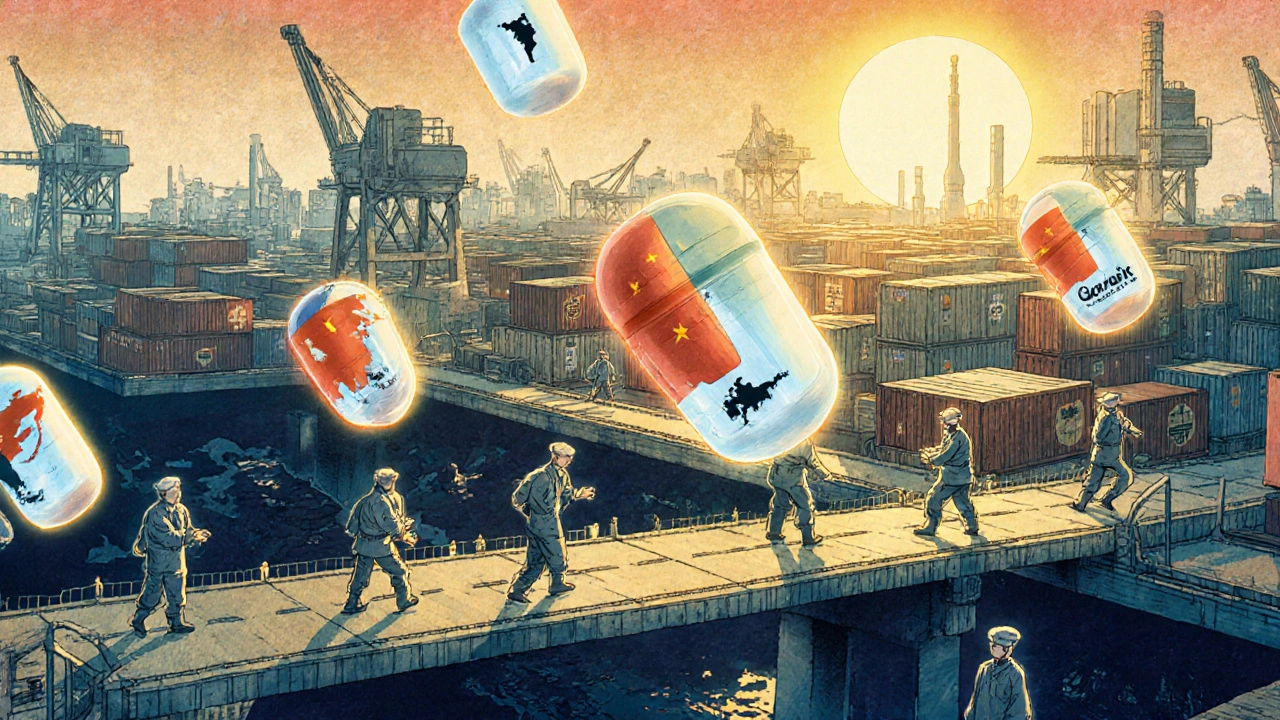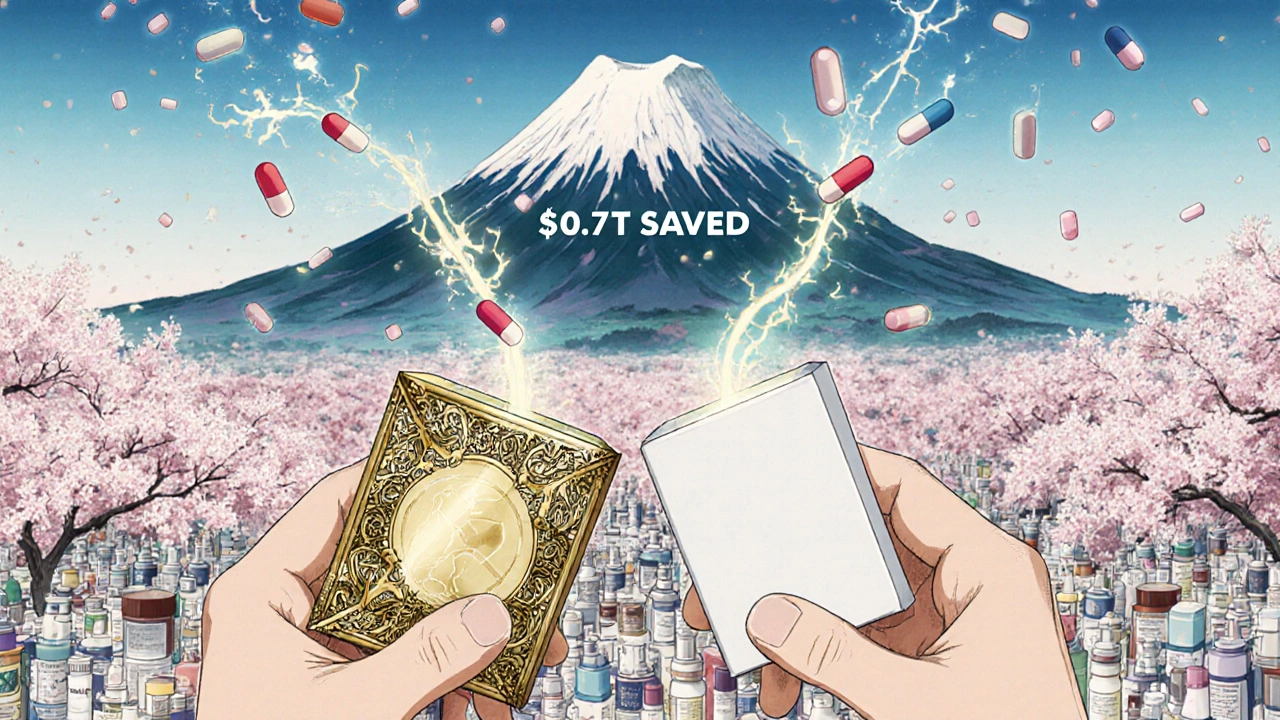Manufacturing Cost Analysis: Why Generic Drugs Are So Much Cheaper

When you pick up a prescription for a generic drug, you might think you're getting a lesser version of the medicine. But you're not. You're getting the same active ingredient, the same effectiveness, and the same safety profile - for a fraction of the price. The reason? Manufacturing cost analysis shows that generic drug production is built on a fundamentally different economic model than branded drugs. It's not about cutting corners. It's about eliminating what’s no longer needed.
Why Generics Don't Need to Spend Billions
Branded drugs start with a massive investment. Developing a new medicine takes 10 to 15 years and costs an average of $2.6 billion. That money pays for years of lab research, clinical trials with thousands of patients, regulatory filings, and marketing campaigns to convince doctors and patients the drug is worth the price. By the time a branded drug hits the market, the company has to recoup that cost - plus make a profit. Generics don’t do any of that. Once a patent expires, any manufacturer can produce the same drug. All they need to prove is bioequivalence: that their version delivers the same amount of active ingredient into the bloodstream at the same rate as the original. That’s it. No new clinical trials. No animal studies from scratch. No multi-year safety monitoring for a new molecule. The FDA’s Abbreviated New Drug Application (ANDA) process cuts approval costs from $2.6 billion to just $2-5 million. That’s a 99% reduction in development spending.How Production Costs Break Down
Once the approval hurdle is cleared, manufacturing kicks in. For generic producers, the cost structure is simple: 30% goes to making the drug itself, 4% to moving it from factory to pharmacy, and 3-5% to quality checks and compliance. Compare that to branded drugs, where R&D and marketing can eat up 70% or more of total costs. The biggest single cost in generic production? Active Pharmaceutical Ingredients (API). This is the actual medicine - the chemical that treats your condition. API prices can swing 20-30% in a year based on global supply chains. A single raw material from India or China can spike in price if there’s a flood, a political dispute, or a factory shutdown. That’s why generic manufacturers don’t rely on one supplier. They build redundancy into their sourcing. The rest? Excipients - the fillers, binders, and coatings that make a pill hold together and swallow easily - cost pennies. Packaging? A few cents per unit. Quality control? Non-negotiable, but standardized. Unlike branded drugs, which need custom packaging for brand recognition, generics use simple, efficient designs. No fancy colors. No logos. Just clear labeling.Scale Is Everything
The real magic of generic manufacturing is scale. Every time a company doubles its production volume, the cost per unit drops by 18%. If they double the volume of a single drug type - say, 10 mg lisinopril tablets - the savings jump to 45%. That’s not theory. It’s what Boston Consulting Group found after analyzing 15 major generic manufacturers in 2019. That’s why you see the same generic drug made by five different companies. Once a patent expires, dozens of factories around the world start producing it. The more competitors, the lower the price. When six or more companies make the same drug, prices can fall over 95% below the original brand. Even with just two competitors, prices are already 54% lower. This isn’t just about competition. It’s about efficiency. Generic manufacturers operate on razor-thin margins - sometimes as low as 5-10%. A 1% improvement in production speed or waste reduction can mean the difference between profit and bankruptcy. That’s why they invest in automation, continuous manufacturing, and lean production. By 2027, these upgrades could cut costs another 20-25%.
Why Generics Dominate Prescriptions - But Not Spending
In the U.S., generics fill 90.1% of all prescriptions - that’s nearly 9 billion pills a year. Yet they account for only 15.8% of total drug spending. Why? Because they’re cheap. A branded statin might cost $150 a month. The generic? $4. A branded insulin might be $300. The generic? $25. This mismatch isn’t a flaw - it’s the point. Generics exist to reduce overall healthcare spending. From 2023 to 2027, they’re projected to save the U.S. healthcare system $1.7 trillion. That’s more than the annual GDP of Sweden. The branded drug industry still takes 76% of total drug spending, even though their products are prescribed far less often. Why? Because they’re still the only option for new drugs. But as more patents expire - $294 billion worth in 2023 alone - that share keeps shrinking.Where Generics Struggle
Not all drugs are easy to copy. Complex generics - like inhalers, injectables, or topical creams - require advanced manufacturing. Getting the particle size, viscosity, or delivery mechanism just right can take years of trial and error. These drugs have fewer competitors, so prices stay higher. Also, some manufacturers make both branded and generic versions of the same drug. That creates a conflict: the branded version earns 25-30% retailer margins, but the generic version can earn 201-1,016% more. Why? Because pharmacies get paid more to dispense the generic. That’s why you might see the same pill in two boxes - one with a brand name, one without - and the generic version is priced lower but gives the pharmacy a bigger cut.
Regulation and the Future
The FDA is pushing to speed up approvals. Under GDUFA III, fees increased in 2023 to fund more inspectors and faster reviews. The goal? Cut approval time from 40 months to 24. That means more generics hit the market faster, driving prices down even more. The Inflation Reduction Act of 2022 lets Medicare negotiate drug prices. While it targets branded drugs first, the pressure will ripple through the generic market. If Medicare pays less for a branded drug, pharmacies will demand lower prices for the generic too. Biosimilars - generic versions of biologic drugs like Humira or Enbrel - are the next wave. They’re harder to make than small-molecule generics, but costs are falling 15% per production doubling. That’s slightly slower than traditional generics, but still massive.Supply Chain Risks
There’s a dark side. Because generics operate on such tight margins, they’re vulnerable. When a single API supplier has a problem - like a fire in a plant in India or a shipping delay from China - shortages happen. In 2022, there were 350 active drug shortages in the U.S., many tied to generic production. Experts warn that over-reliance on low-cost manufacturing abroad has weakened resilience. The industry is responding. Companies are diversifying suppliers. The U.S. government is investing in domestic API production. But these changes take time - and money. In the short term, expect some price bumps as supply chains adjust.What This Means for You
If you’re paying for prescriptions, choosing generics isn’t just smart - it’s essential. You’re not sacrificing quality. You’re avoiding paying for someone else’s research, marketing, and executive bonuses. The same FDA standards apply. The same clinical evidence backs them. The next time your doctor writes a prescription, ask: "Is there a generic?" If the answer is yes, you’re saving hundreds - sometimes thousands - a year. That’s not a small thing. It’s the entire point of the system.Are generic drugs as safe as branded drugs?
Yes. The FDA requires generics to have the same active ingredient, strength, dosage form, and route of administration as the branded version. They must also prove bioequivalence - meaning they work the same way in the body. Generic drugs go through the same manufacturing inspections and quality controls as branded drugs. There is no difference in safety or effectiveness.
Why do generic drugs look different from branded ones?
By law, generics can’t look exactly like the branded version - that would violate trademark rules. So they may have different colors, shapes, or inactive ingredients. But the active ingredient - the part that treats your condition - is identical. These differences don’t affect how the drug works.
Do generic drugs take longer to work?
No. Bioequivalence testing ensures that generics are absorbed into the bloodstream at the same rate and to the same extent as the branded drug. If a branded drug starts working in 30 minutes, the generic will too. Any perceived difference is usually due to placebo effect or variations in how your body absorbs the medicine on different days.
Why are some generic drugs more expensive than others?
Price differences come down to competition. If five companies make the same generic, prices will be very low. If only one or two do, prices stay higher. Also, complex generics - like inhalers or injectables - cost more to produce. And if a drug has a shortage, prices can spike temporarily. Always compare prices at different pharmacies - some offer generics for under $5 with a coupon.
Will generic drug prices keep falling?
Yes - but not forever. Prices will keep dropping as more manufacturers enter the market and automation improves efficiency. But if supply chains become unstable or regulatory costs rise, prices could stabilize or even increase slightly. Long-term, the trend is still downward. The real question isn’t whether generics will get cheaper - it’s whether the system can keep producing them reliably.
